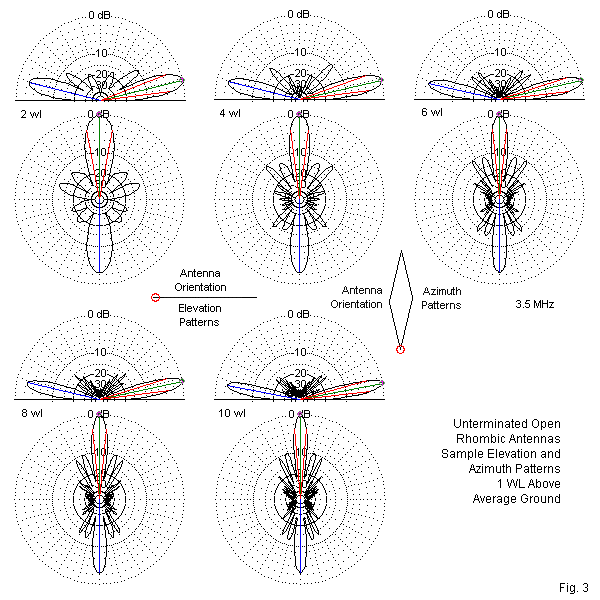I model all my antennas using EZNEC and HFTA (High Frequency Terrain Analysis) to evaluate the take of angle of the various antennas over real ground.
My antennas look like this


An interesting feature of traveling-wave wire antennas which are terminated with a load resistor. On account of this, the forward transmit power gain is lower than what might have been otherwise. Therefore, a practical antenna of this type will have higher gain in receive mode due to Receive Directivity Factor (RDF) than the forward power gain in transmit mode
This has led to a myth, especially amongst a large section of amateur radio operators that these antennas are receive-only antennas and not suitable as transmitting antennas. Nothing can be farther from the truth. One must realize, that some of the other popular antennas which are commonly used by amateur radio operators too have a differential between the RDF gain and power gain. Though it is true that the differential is more pronounced in the case of these antennas.
Unlike multi-band resonant wire antennas, the traveling wave antennas have a uniformly directed radiation pattern which does not change drastically with the frequency band of operation. In other words, the direction of the radiating lobes of traveling-wave antennas remains more-or-less same irrespective of the operating band, whereas, in the case of multi-band resonant wire antennas, the direction of azimuth orientation of the main lobe may differ from band to band. Although the upper elevation angles still bristle with lobes, they are generally all of low strength and therefore untroublesome to antenna performance.
Basic rhombic calculations emerge from a situation that is usually not very realistic for the average amateur installation. The premise is that angle A represents 2 different angles in the antenna installation. First, it represents the elevation angle of maximum radiation. Hence,
HWL = [1 / (4 sin A)]
where HWL is the required antenna height in wavelengths. As well, angle A represents the required V'ing angle, the same angle that we used in the V-antennas. To align the major lobe with the elevation angle, we calculate the leg-length as follows:
LWL = [0.371 / (sin2 A)]
where LWL is the leg-length in wavelengths. For maximum gain at the chosen elevation angle,
LWL = [0.5 / (sin2 A)]
For the best modeling data please see
Models vs. Prototypes: Why Field Adjustment Will Always be Necessary
L. B. Cebik, W4RNL/SK
For Design see
TO SEE the complete Blog list check @ https://www.k0uo.com/k0uo
Rhombic or Yagis
VK3MO, Ian also has a stacked rhombic antenna with 8 wavelengths on a leg giving a total of 1340m of radiating wire. The upper rhombic is at 40M and the lower rhombic is at 21M. The rhombic had a gain of 23dBi at a take off angle of 5 degrees on 20M and is directed at New York. The rhombic was modelled using EZNEC and it has 3dB more gain than the 5/5/5/5 yagis Both the yagis and the rhombic have a take off angle of 5 degrees which allows a comparison between the two antennas in the direction of New York. Ian sees see the 3 dB advantage which validates the accuracy of the NEC antenna modelling software.





Comments